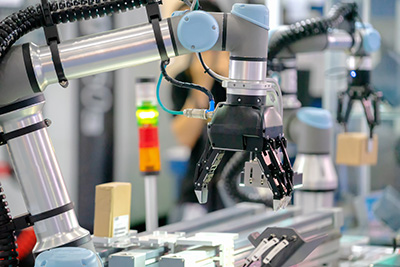 Slim profit margins. Strict quality control. And tight deadlines. Does that sound like your industry? You’re not alone. The world’s best manufacturers are always on the lookout for new technologies that can give them an edge on the competition. Many have added embedded vision to their facilities and have seen its advantages first-hand. It can work for you too.
Slim profit margins. Strict quality control. And tight deadlines. Does that sound like your industry? You’re not alone. The world’s best manufacturers are always on the lookout for new technologies that can give them an edge on the competition. Many have added embedded vision to their facilities and have seen its advantages first-hand. It can work for you too.
How Manufacturers Are Using Embedded Vision
One of the best advantages of embedded vision is its ease of implementation. Embedded vision systems typically consist of a camera capable of processing images for an automated process. The devices are compact, yet still powerful enough to capture an image and send decisions to a robot or some other automated equipment.
All kinds of manufacturers are putting embedded vision systems throughout their facilities. From high-tech electronics to meat processing to pharmaceuticals, embedded vision cameras carry out a variety of tasks. The inspection of finished products is one of the most common uses across industries. But there are more creative and specific applications as well.
Medical professionals are now using embedded vision to improve their diagnoses. Robotics use this vision technology to “see” for tasks like bin picking or holding parts in their proper orientation on the assembly line. Supply chains have benefited from the use of automated guided vehicles which are only able to navigate with the help of onboard embedded vision.
Advantages of Embedded Vision Now and Beyond
Embedded vision brings along many advantages, even in addition to the tasks they perform. Computer vision systems require cameras to be connected to a dedicated PC or sometimes networked to a server. In a manufacturing facility with dozens of cameras or more, that’s a large about of cabling and equipment. Embedded vision simplifies implementation and support.
Manufacturing facilities are often harsh environments for cameras and other equipment. Embedded vision systems can be designed to withstand these kinds of conditions and even placed in rugged housings to keep dust and other debris away from lenses and sensitive electronics.
The manufacturers of embedded vision systems are constantly adding new capabilities to make these cameras and their onboard logic more flexible than ever. The addition of more intelligent displays will continue to make them easier to program and configure. Devices with the ability to load new programs will allow manufacturers to move cameras from one task to the next. One thing’s for sure. The advantages of embedded vision for manufacturers will keep growing.
Need to find the right camera for your embedded vision system? Contact the experts at Phase 1 Technology Corp.
